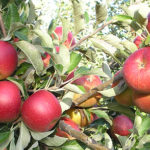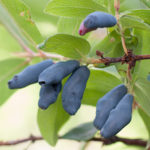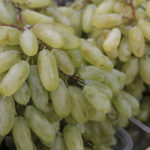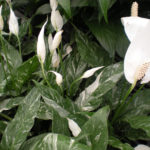Rose Satina
Ground cover roses are considered a relatively young group, the first representatives of which appeared only in the late 70s of the last century. But in terms of varietal diversity, they are already superior to many other groups. Among the low representatives of ground cover varieties with drooping branches, the Satina variety is very popular. This charming perennial attracts not only with its delicate color and abundant flowering. The culture is quite unpretentious and responsive even to minimal care. In Russia, this variety is quite famous, as it is perfect for the climatic conditions of many regions of the country.
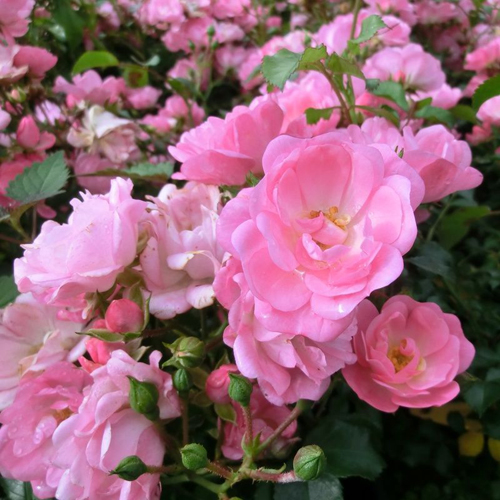
Origin
The delicate rose belongs to the German selection, more precisely - to the Tantau company. She was bred by Hans Jürgen Evers in 1988 and is one of the representatives of the City-flor group. Official sources do not provide information on the origin of the variety, but on the Internet there are mentions that our heroine is an improved form of the very famous Fairy variety. In Germany, the novelty was introduced in 1992 as Satina. The decorative perennial received certification from ADR (German Certification of Varietal Roses) in 2004. This certificate is issued only after many years of scrupulous assessment of the qualities and merits of the variety and is a real quality mark. The variety is also known under other names: Harewood, Le Plessis-Robinson, Snow Cloud, TANinaso.
Awards
Our heroine cannot boast of a scattering of awards. In 1995, Satina was the winner of the Breeder's Choice Award in the UK. In 2004 - ADR certification and Environmental Award Orlean, received in Orleans (France). But the main award is, of course, the recognition of rose growers all over the world.
Description
The plant is well branched, spreading. But at the same time it has rather compact dimensions - height 50 - 60 cm, width - about 60 cm. Shoots are not long, drooping. The bush is dense, well leafy, therefore it is quickly able to cover the soil with a flowering carpet, especially when several roses are planted at once. The leaves are small, pinnate, serrated along the edge, the surface is shiny. They are painted in dark green color, have a healthy and decorative appearance. Each shoot forms a chic, dense inflorescence, consisting of at least 5 - 10 flowers.
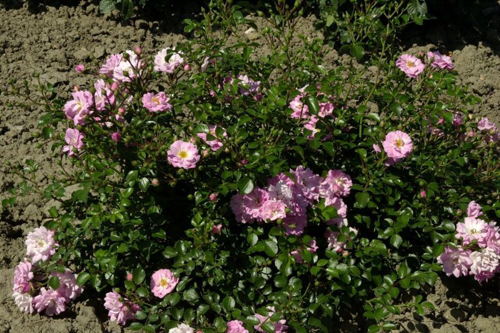
The buds are small, dense, rounded. The flower rosettes are not very large, 3 - 4 cm in size. Satina enchants with a double cup-shaped flower, consisting of 20 or more petals. In full dissolution, the rosettes become almost flat, saucer-shaped, exposing the yellow core, but at the same time they do not lose their charm and freshness. Petals with a playful wavy edge. The colors are charming, delicate, pink, very uniform, as if coming from the inside. At the beginning of flowering, the color is dominated by a rich pink color, which brightens noticeably towards the end of flowering.
Bloom
Satina refers to re-flowering. The rose blooms in tides throughout the season without interruption. Decorativeness is maintained for a very long time - from June to October. The flowering is very lush due to the large number of inflorescences. From the side it seems that the bush is covered with pink and white foam. The illusion of lightness and airiness is created due to the good fullness of the brushes, consisting of small double flowers with wavy petals. If you do not prune in time, subsequent flower waves will not be as abundant. The aroma is not strong, delicate, soft.
A feature of the Satina variety is the ability of the shrub to cleanse itself. This means that the plant independently sheds the pedicel with a faded flower. Therefore, the bush looks neat and decorative throughout the season. True, this does not mean that the bush does not need to be looked after. Faded shoots must be removed in order to activate the rose to form new peduncles.
Characteristics
- According to the level of winter hardiness, Satina is suitable for growing in central Russia. It tolerates winters well with temperatures of -23 ° C;
- belonging to the "City-flor" group makes our heroine resistant to unfavorable environment;
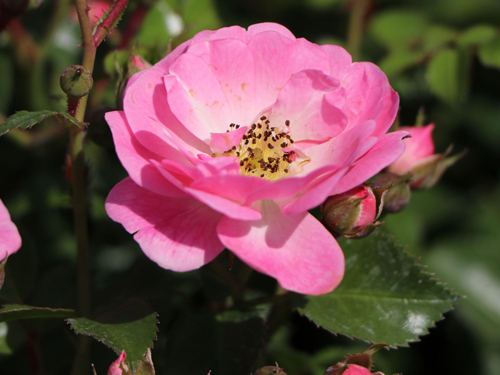
- the culture withstands hot summer weather, the color does not fade from the bright sun. At the same time, the shrub thrives in partial shade;
- resistance to major diseases of the culture (including downy mildew) is very good, which is confirmed by numerous reviews of flower growers. Most importantly, at the end of summer, when the time for powdery mildew comes, Satina remains resistant to it. But in the most unfavorable years, the variety can still be affected by black spot and powdery mildew;
- the flowering shrub is resistant to rain, which is also said by flower growers. But the Rosebook website claims to have poor rain resistance.
Agrotechnics
You can plant a rose in spring or autumn. This small plant is suitable for any garden area. Satina is unpretentious to soils, but in order to achieve rapid growth and decorativeness, it is necessary to prepare the site in advance by filling the planting hole with nutritious and loose soil mixture. It is advisable to plant our heroine in a well-lit, sunny area, although in partial shade she will not lose her attractiveness. To maintain the plant's resistance to common diseases, the planting site must be equipped in such a way that it is well ventilated in the summer. Such a condition is necessary, taking into account the peculiarities of the growth of the ground cover, which covers the soil surface with a dense carpet, thereby creating favorable conditions for the development of fungi in wet weather. The culture is watered abundantly, but much less often than spray roses, since moisture is retained longer under the flower cover. In the spring, remove old or growing inward shoots, be sure to cut out the frozen branches. Gardeners often write that they do not cover perennials for the winter, but, depending on the region or an abnormally cold winter, the shrub must be covered with any non-woven material or spruce branches. If desired, the culture can be formed as a scrub or on a trunk.
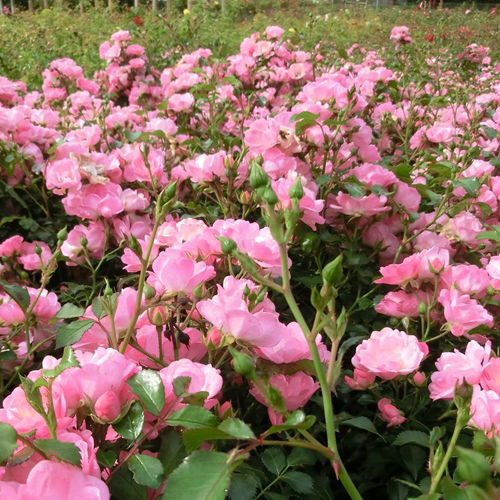
Satina is an excellent ground cover that can be used in small areas, in landscape compositions or as a border, combined with other plants. Our heroine grows well even in tubs and pots, ideal for urban landscaping. Due to the dense structure of the bush, sunlight rarely looks under the overgrown rose, so weeds do not grow under it. This makes cleaning very easy. The plant is very hardy and healthy, which is confirmed by the ADR certificate. The variety attracts with ease of care, but at the same time lush and abundant flowering, the ability to self-purify. Some rose growers call Satina the lazy flower. Of course, with a complete lack of care or an unsuccessfully chosen place, various problems can arise.
